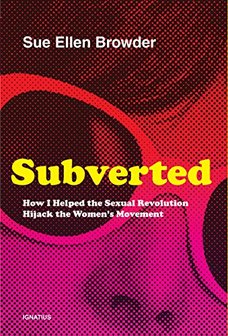
Has it ever occurred to you that there are two distinct and contradictory streams of thought about women in our modern culture? That thought has been nagging at me for awhile now, but lately it’s come into sharp focus, and this book helped with that process.
Imagine this scene: A conference room at some high-powered law office. The announcement is being made of who has made partner. It’s been a long and somewhat bitter process, but now it has been decided: out of two women and three men the choice has come down to one of the women. She is poised, articulate, and superbly dressed in her power suit. She is known for her abilities in the courtroom. From now on she will be paid, in money and respect, for the position she has earned. Meanwhile, just outside the window of this conference room is a billboard advertising
You may say, with some justification, well, it might be a man who made partner and a man on the billboard, maybe a sports figure advertising something. But I can guarantee you this: the focus of the male image would not be a sexualized one. (Remember Playgirl magazine? It closed down in 2009.) My purpose here is not to examine the whole ball of wax about female exhibitionism/male voyeurism, with equal criticism on both sides, but instead to ask, “Why has the much-vaunted women’s movement resulted in more objectification of women, not less?”
If you read the first five chapters of Subverted, you’ll get a good idea of the answer. The view has always been that there were two “waves” of feminism, or the women’s movement, or whatever you want to call it. The “First Wave” happened in the late 1800’s and early 1900’s and resulted in women being able to vote, sign contracts, own property in their own names, etc. It was a movement to make women equal under the law with men, and I don’t think there’s anyone reading this post who would disagree with it. (Although I did work with a woman at one time who thought that giving women the right to vote worked against male leadership in the home, since the man should be the one to vote as the voice of his family. Since I was single at the time, I wondered where that left me.) But the “Second Wave,” that crashed (literally) into society in the 1960’s and 1970’s, was far different in its focus. Now women were urged to be just like men in the sense that they should indulge in sexual relationships without any commitment. (I do not in the least imply here that all men want solely physical gratification; the idea that they do is just one more lie perpetrated by Second Wave feminism.)
I’m planning a whole series of posts on the subject of the mess we’s in when it comes to societal attitudes about women and family, so I’ll quit here for now. I will say that the subtitle of this book promises a little more than it delivers. Browder wrote articles for Cosmopolitan magazine during the early years of her journalism career and so participated in selling the glamorous image of the single girl so fetishized by Cosmo’s editor Helen Gurley Brown. I don’t know that this really adds up to helping the sexual revolution hijack the women’s movement; maybe giving it a little shove here and there. I wish that Browder had spent more time on the history of the women’s movement and less on her own, sad to say. Her story is compelling and meaningful–to her. Somehow I could never get too involved in her descriptions of life with her husband Walter and their two children. I did very much appreciate her honesty and anguish over her decision (with Walter’s consent) to abort her third child. This act haunts her and her husband from then on. Browder eventually becomes a committed, passionate Roman Catholic after having lived her life as a nominal Christian, with the guilt over the abortion being very much a factor in this conversion. The book ends with Walter’s death in early 2008.
So I’d say, read the sample available through Amazon or get this book from your local library. (The link at the beginning of this post is to my store page; if you decide to buy the book through Amazon I will get a small commission as an Amazon affiliate.) If you find yourself drawn into reading the whole thing, hey, that’s great. And then go on from there to dig deeper, as I’m planning to do.